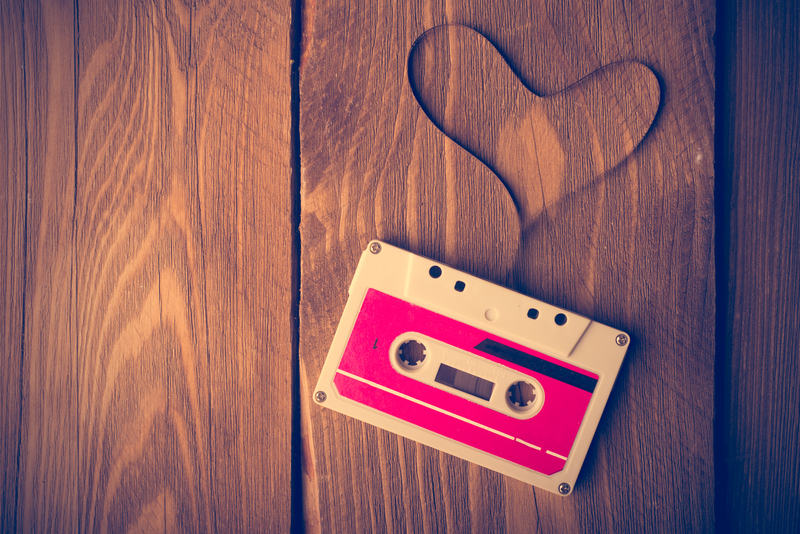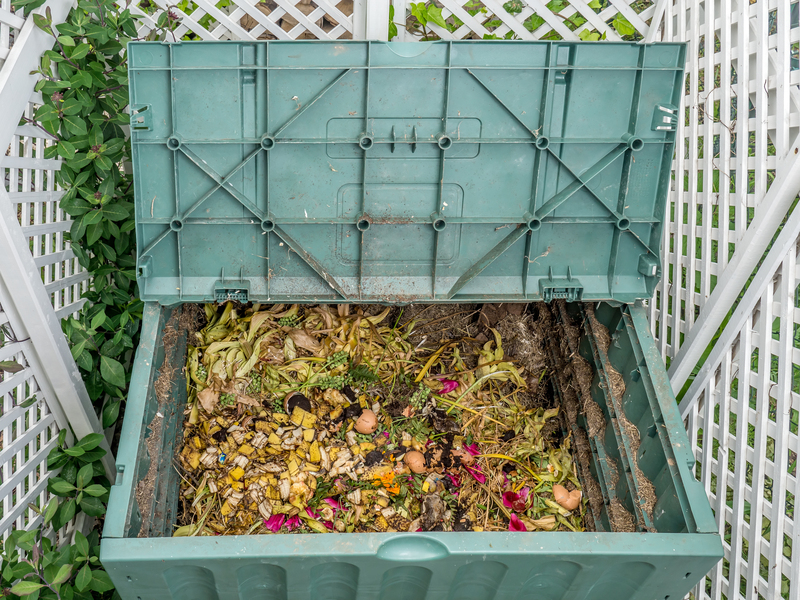Rethinking Cardboard Disposal and Eco-Friendly Packaging
Cardboard has become an integral part of modern packaging solutions, providing durability, recyclability, and cost-effectiveness for countless industries. However, as the world focuses more on sustainability and reducing waste, it's crucial to rethink cardboard disposal and eco-friendly packaging practices. This comprehensive article delves deep into innovative approaches, current challenges, and actionable steps consumers and businesses can take to ensure a greener future.
Understanding the Environmental Impact of Cardboard
Cardboard packaging is everywhere--from the boxes that deliver your online orders to the containers that hold your groceries. While cardboard is often lauded for its recyclability, the reality is more complex than it may seem.
- Raw Material Consumption: Producing cardboard requires significant energy and water, and involves harvesting trees, which impacts biodiversity.
- Recycling Limitations: Not all cardboard makes it to recycling plants. Food contamination, plastic coatings, and lack of local recycling facilities all contribute to waste.
- Landfill Concerns: When not properly disposed of, cardboard decomposes in landfills and releases methane, a potent greenhouse gas.
- Transportation Emissions: Large amounts of cardboard require collection and shipment, contributing to CO2 emissions.
To truly rethink cardboard disposal and sustainable packaging, it's essential to address these environmental challenges holistically.

The Lifecycle of Cardboard Packaging
Cardboard is typically made from fibers derived from trees (virgin fibers) or recovered paper (recycled fibers). The cardboard lifecycle includes manufacturing, use, collection, recycling, and eventually, disposal or reuse. Understanding this cycle helps identify opportunities to intervene and reduce negative impacts.
- Manufacturing: From pulp to paper, involves significant resources (wood, water, energy).
- Usage: Used to package and ship goods, often just once (single-use packaging).
- Collection: Consumers or businesses sort and set out cardboard for pickup.
- Recycling: Clean, uncontaminated cardboard is processed into new products.
- Disposal: Contaminated or broken-down cardboard enters the waste stream.
Throughout this process, cardboard recycling and eco-friendly packaging practices play pivotal roles in minimizing waste and environmental harm.
Current Methods of Cardboard Disposal: Are We Doing Enough?
How do we currently dispose of cardboard? Primarily through recycling, composting, or, unfortunately, landfill disposal.
1. Recycling Cardboard
In countries with robust recycling systems, cardboard waste is collected and processed in specialized facilities. Recycling cardboard reduces the need for virgin materials and saves energy. Yet, recycling rates are far from perfect.
- Contamination -- Cardboard with food residue, oil, or plastic tape cannot always be recycled.
- Collection Challenges -- Not all municipalities provide co-mingled or single-stream recycling options.
- Quality Degradation -- Fibers break down after being recycled multiple times, resulting in lower-quality cardboard over time.
2. Composting Cardboard
*Composting* is another eco-friendly solution for clean corrugated cardboard. Shredded brown cardboard can serve as "brown" material in compost piles, balancing nitrogen-rich "green" waste. However, not all cardboard is suitable--*coated* or waxed boxes must be excluded.
3. Landfill Disposal
When all else fails, waste cardboard disposal ends up in landfills. Here, decomposition is slow due to a lack of oxygen, producing methane. This scenario must be minimized for a truly eco-friendly approach.
Pioneering Eco-Friendly Packaging Alternatives
Rethinking cardboard disposal goes hand-in-hand with developing innovative, sustainable packaging alternatives. Many companies are responding to consumer demands and environmental concerns by reimagining packaging designs and materials.
1. Using More Recycled Content
Manufacturers are increasingly using high percentages of recycled fibers in their cardboard products, reducing reliance on virgin pulp and saving trees.
2. Biodegradable and Compostable Packaging
*Plant-based materials*, such as mushroom packaging, cornstarch peanuts, and seaweed films, break down naturally and reduce landfill loads. These provide innovative alternatives to traditional cardboard and plastic packaging.
3. Minimalist and Reusable Packaging
By designing packaging to use less material or to be repurposed, companies can drastically decrease packaging waste. Examples include collapsible boxes, fabric wraps, and refillable containers.
4. Digital Solutions and Smart Packaging
Integrating QR codes or apps that guide consumers in proper disposal can minimize confusion and contamination, improving recycling rates.
Best Practices for Cardboard Recycling and Disposal
To maximize the sustainability of cardboard packaging and disposal, consumers, businesses, and municipalities can adopt several best practices:
For Consumers
- Break boxes down before recycling to save space and improve collection efficiency.
- Remove all tape, labels, and plastic before tossing cardboard in the recycling bin.
- Keep cardboard clean and dry--oil, grease, and food contamination can ruin recyclability.
- Compost eligible cardboard at home to create nutrient-rich soil additive.
- Reuse boxes whenever possible for storage, organization, or gifting.
For Businesses
- Work with suppliers to source packaging made from recycled or certified sustainable materials.
- Develop take-back or recycling programs to help customers dispose of packaging responsibly.
- Optimize box sizes to reduce excess material and shipping costs.
- Train staff on proper sorting and recycling procedures.
- Encourage use of digital receipts and instructions to minimize unnecessary paper waste.
For Municipalities and Policy-Makers
- Invest in improved recycling infrastructure and community education campaigns.
- Implement wider curbside compost and cardboard pickup services.
- Offer incentives for businesses adopting eco-friendly packaging solutions.
- Enforce regulations around packaging producer responsibility and material usage.
- Track and publicly report recycling rates and outcomes to increase transparency.
Innovative Trends in Eco-Friendly Packaging
The movement toward eco-friendly packaging goes far beyond just recycling cardboard. Here are some exciting trends leading the way:
1. The Circular Economy Model
This approach involves viewing all packaging, including cardboard, as part of a closed loop. Products are designed for reuse, recycling, or composting, ensuring materials remain valuable rather than becoming waste.
2. Packaging-Free and Zero Waste Stores
Many retailers now offer goods without unnecessary packaging. Shoppers bring their own reusable containers, dramatically reducing demand for single-use cardboard.
3. Smart Packaging Design
Designers are creating packaging that uses less material, eliminates ink and adhesives that hinder recycling, and can be combined more easily in the recycling process.
4. Education and Labeling Innovations
Clear labeling on boxes, indicating whether they're recyclable, compostable, or require special handling, helps consumers make informed decisions.
Rethinking Cardboard through Reuse and Upcycling
Before disposing of cardboard, consider its potential for reuse. With a bit of creativity, cardboard can serve a second life in both functional and decorative roles.
- DIY storage solutions, drawer dividers, or organizers.
- Children's crafts, school projects, or homemade toys.
- Shipping or gifting items to friends and family.
- Protective mats for painting, gardening, or moving furniture.
These small steps reinforce a mindset of reducing, reusing, and recycling--the very foundation of sustainable living.
Addressing Cardboard Disposal Challenges in E-commerce
The boom in online shopping has caused a surge in packaging waste, especially cardboard boxes. E-commerce giants and small sellers alike must modernize their packaging strategies.
- Right-Sizing Packaging: Avoid shipping small items in oversized boxes; use padded mailers or smart-fit containers when possible.
- Offering Packaging Return Programs: Some brands now provide easy ways for customers to return packaging for reuse or recycling.
- Partnering with Recycling Initiatives: Collaborate with organizations dedicated to improving cardboard recovery and recycling rates.
How to Choose Truly Eco-Friendly Packaging Solutions
Businesses aiming to make sustainable choices should look for packaging that meets the following criteria:
- Made from a high percentage of post-consumer recycled content.
- Bears certifications such as FSC (Forest Stewardship Council) or SFI (Sustainable Forestry Initiative).
- Engineered for recyclability, compostability, or reuse.
- Produced using renewable energy sources whenever possible.
Consumers can use their purchasing power to support these efforts by choosing brands committed to sustainable packaging.
The Role of Education and Advocacy
Education is vital for improving cardboard disposal practices and promoting sustainable packaging. Businesses, governments, and environmental groups must work together to:
- Raise public awareness about correct disposal and recycling methods.
- Dispel myths around "wish-cycling"--putting non-recyclable items into recycling bins.
- Promote the environmental benefits of eco-friendly packaging options.
- Host community events, workshops, and online campaigns to foster engagement.

The Future of Cardboard Disposal and Eco-Friendly Packaging
As we rethink cardboard disposal and embrace eco-friendly packaging innovation, the future holds promise. Emerging technologies--such as biodegradable adhesives, edible packaging, and advanced fiber recovery methods--will help close resource loops. However, real change requires ongoing collaboration between consumers, industry, and regulators.
Key Takeaways
- Reduce: Opt for minimal packaging and reusable solutions whenever possible.
- Reuse: Give cardboard a second life before disposal.
- Recycle: Clean, sort, and recycle as much cardboard as possible.
- Advocate: Support policies and businesses driving sustainable packaging innovation.
By adopting these principles, we can significantly lessen the environmental burden of packaging waste.
Conclusion: Our Shared Responsibility
Rethinking cardboard disposal and eco-friendly packaging is not a fleeting trend, but a vital step toward a healthier planet. As individuals and organizations, we must pursue better packaging choices, improve recycling and reuse practices, and support innovations that close the sustainability loop. The future of packaging is green, and together, we can turn the tide on cardboard waste--one box at a time.